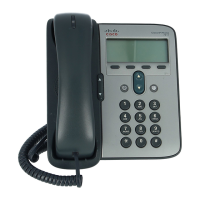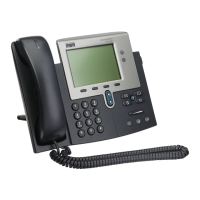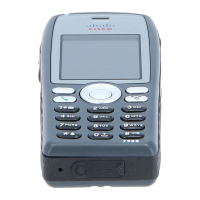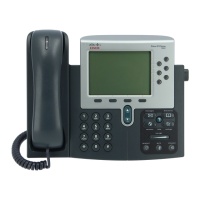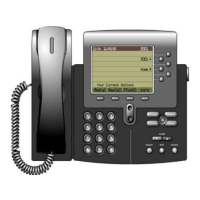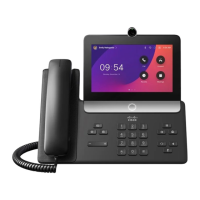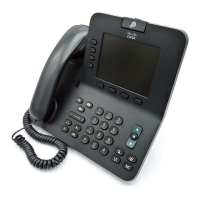Chapter 4 Configuring Settings on the Cisco Unified IP Phone
Device Configuration Menu
4-16
Cisco Unified IP Phone 7961G/7961G-GE and 7941G/7941G-GE for Cisco Unified Communications Manager 6.0
OL-11953-01
CallManager Configuration Menu
The CallManager Configuration menu contains the options CallManager 1,
CallManager 2, CallManager 3, CallManager 4, and CallManager 5. These
options show Cisco Unified Communications Manager servers that are available
for processing calls from the phone, in prioritized order.
To change these options, use Cisco Unified Communications Manager
Administration.
For an available Cisco Unified Communications Manager server, an option on the
CallManager Configuration menu will show the Cisco Unified Communications
Manager server IP address or name and one of the following states:
• Active—Cisco Unified Communications Manager server from which the
phone is currently receiving call-processing services.
• Standby—Cisco Unified Communications Manager server to which the
phone switches if the current server becomes unavailable.
• Blank—No current connection to this Cisco Unified Communications
Manager server.
An option may also display one of more of the following designations or options:
• SRST designation—Indicates a Survivable Remote Site Telephony router
capable of providing Cisco Unified Communications Manager functionality
with a limited feature set. This router assumes control of call processing if all
other Cisco Unified Communications Manager servers become unreachable.
The SRST Cisco Unified Communications Manager always appears last in
the list of servers, even if it is active.
You configure an SRST router address in the Cisco Unified Communications
Manager Administration SRST Reference Configuration page (choose
System > SRST). You configure an SRST reference in the Device Pool
Configuration page (choose System > Device Pool).
• TFTP designation—Indicates that the phone was unable to register with a
Cisco Unified Communications Manager listed in its configuration file and it
registered with the TFTP server instead.
• Authentication icon—Appears as a shield and indicates that the
connection to the Cisco Unified Communications Manager is authenticated.
For more information about authentication, refer to Cisco Unified
Communications Manager Security Guide.

